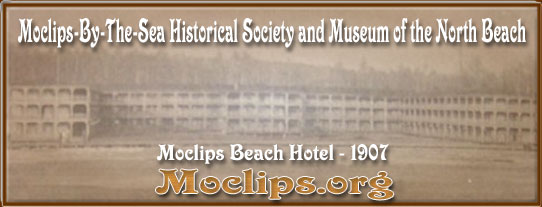For
hundreds of years, the Quinault people called the central coast of
Washington their home. The Quinault tribal membership includes: Quinault,
Quileute, Queets, Hoh, Chehalis, Chinook and Cowlitz. The Quinault
and Queets were the original tribes from the Quinault territory.
The Quinaults extended beyond todays reservation boundaries in settlements
at Chenois Creek, Copalis and Oyhut.
The
people of the Quinault Nation have been excellent canoe carvers,
hunters and gatherers and prolific basket weavers. Many baskets are
on display in the museum.
First
contact with Europeans came in 1775 when the Spanish explored this
part of the Washington coast. The Sonora Reef and Santiago Beach
were both named after the two Spanish ships that visited this area
under the command of Captain Bodega. This area was also called Pt.
Granville. The U.S. Coast Guard built a station on the point and
was later decommissioned. In 1958, the vessel SEAGATE ran aground
on Sonora Reef and split in half. Some of the salvaged items are
on display in the museum.
Taholah
was named Granville by European explorers and was the largest of
the Quinault villages. Several others were located up and down the
Quinault River. The Quinaults later renamed their village in honor
of Chief Taholah who was a signer of the 1855 Quinault River Treaty,
also known as the Treaty of Olympia.
Taholah
is bordered by the Pacific Ocean with the Quinault River flowing
to the beach from Lake Quinault. Taholah has some of the most picturesque
beaches on the entire Washington coast. The making of canoes and
net fishing still exist here.
